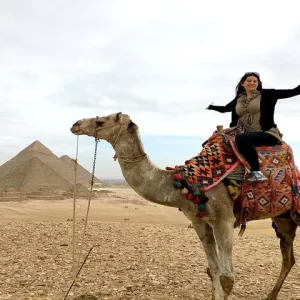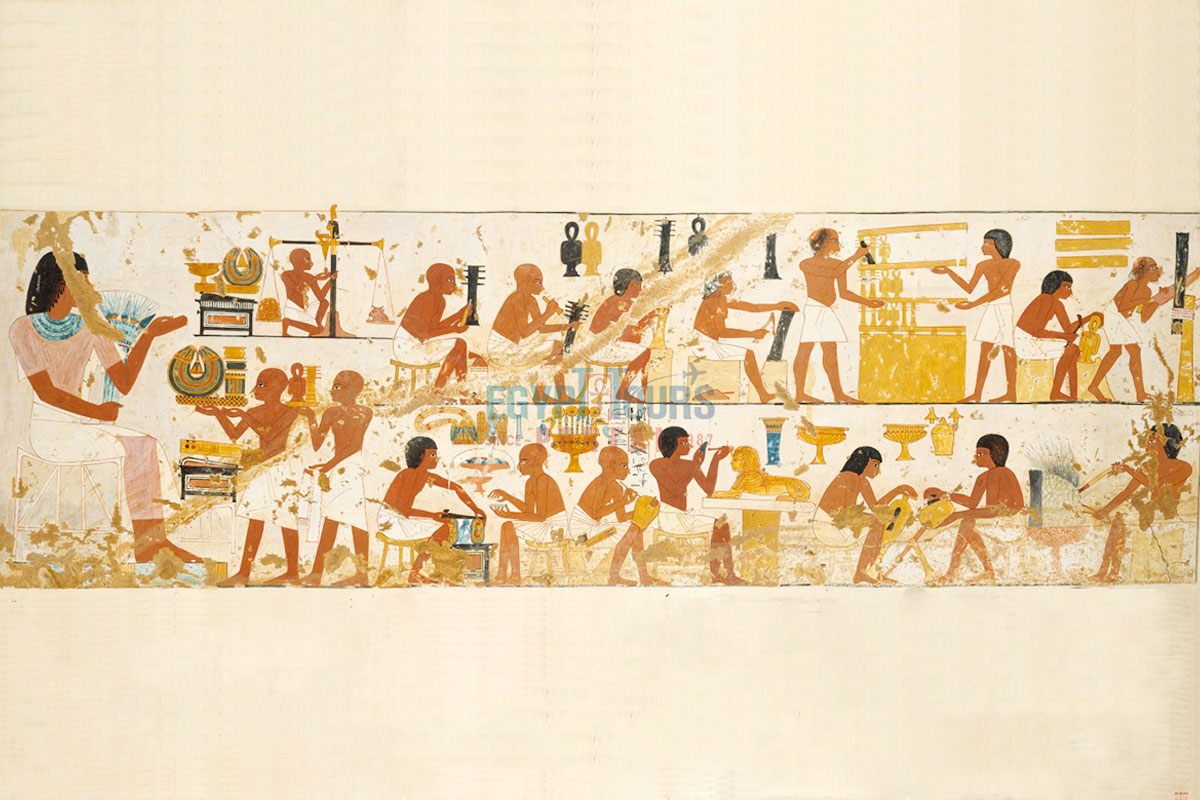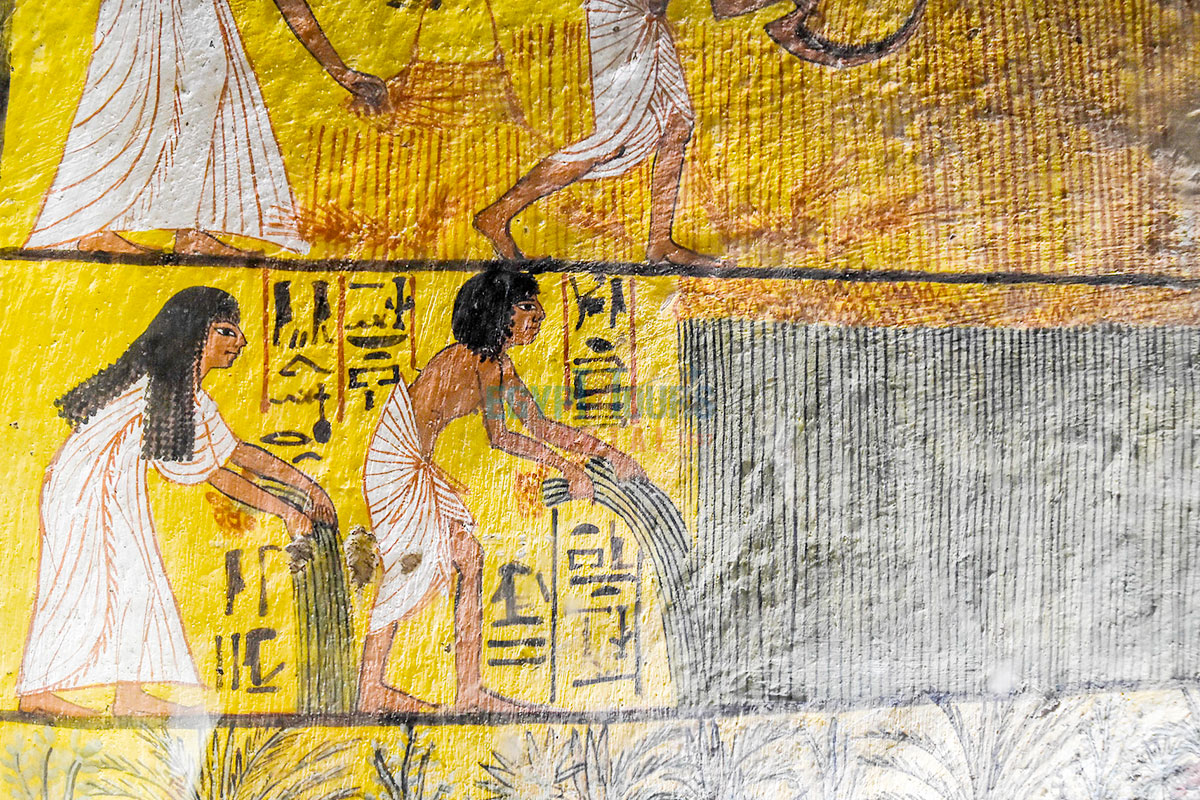The Deir El Medina or as it is most commonly known as “The Worker’s Village” is an immortal piece of art that reflects realism and offers a glimpse into the daily lives of the ancient Egyptian Workers. Every true seeker of history will get to witness the mindset of the Theban craftsmen and artisans who constructed and decorated the greatest historical attractions in the history of Egypt such as the Valley of the Queens, Hatshepsut Temple, and Valley of the Kings.
The village acted as an isolated dimension preserving the most significant archaeological monument in all of Luxor where the memories, struggles, and emotions of the ancient Egyptians are carved across the sands and walls of this enduring village.
Deir El Medina has a total area of 5,600 m2 with a narrow path that runs the length of the village and is located at the foot of the great Theban Hills, very close to the valley of the Queens in Luxor, on the west of the Hill of El Khokha.
The Deir El Medina is known as Pa Demi which means the village, also it was referred to in official correspondence as Set-Ma’at which means “The Place of Truth” due to the workers believed to be inspired by the ancient Egyptian gods to make the eternal and divine kings and their royal family plus the workers were called “Servants in the Place of Truth“. In the early Christian era, many monks took over the temple of Hathor which was used as a cloister. Deir El Medina means the monastery of the town.

The oldest ruins in the village date from the reign of Thutmose I (1520 – 1492 BCE) the son of the Pharaoh Amenhotep I (1541 – 1520 BC) who planned the village. He with his mother Ahmose – Nefertari were seen and worshipped as protective gods plus the workers also honored Meretseger the cobra goddess whose name means “She Who Loves Silence” who became the protector of the dead and the personification of the Theban Necropolis.
It was Amenhotep I who decided to make this village to house the workers who had a lot of work on their hands. Tomb robbery and desecration were serious problems so the royals decided to make their tomb less accessible which was carved into the cliff walls.
In 1156 BC, the village saw the first labor strike in history. In 1100 BC, Tomb robbing became an even bigger problem as the workers robbed most of the tombs. In 1069 BC, the villagers moved to Thebes and Deir El Medina was abandoned between 320 AD & 400 CE, the Christian monks inhabited the village and occupied the temple of Hathor which they transformed into their cloister.
Excavation started in the village in 1905 AD by Ernesto Schiaparelli Italian archaeologist and many others followed such as Bernard Bruyere the French archaeologist between 1922 & 1940 AD who uncovered the wonders of the village at the same time when Howard Carter discovered the Tomb of Tutankhamun.

The village was situated in the middle of the desert to be isolated from the rest of the population as much as possible. The entire community was shaped to have a pattern of a rectangular grid that has a protective all which is occupied by a massive area of 1.4 acres filled with 68 houses located within the wall found on the mountain slopes.
The main entrance was in the north wall which had a guardhouse plus another on the south. All the cemeteries of the workers are found on the west and east featuring a number of beautiful and elaborated tombs. All the houses were stacked together to efficiently use the entire space. The village had one main street and all the houses are found on both sides.
Deir El Medina was not self-sufficient as there were no farmers and the village was in the heart of the desert plus the lack of water due to the far distance so all the food, water, and supplies were delivered to the village each month as a form of payment.

One of the most important ancient events that ever occurred was the first documented labor strike in history during the reign of Ramesses III in 1156 BCE after the defeat of the Sea People and in 1178 BC prevented their vicious invasion, At the same time the country was infested with corrupt officials, poor harvests, and Ramsess III Heb-Sed Festival made their monthly payment late which resulted in the entire workers march on Thebes to demand their pay.
The strike was the first of its kind in the history of Egypt and held a very significant meaning. The king of Pharaoh was the main and only mediator and the connection between the gods and the people was kept balanced which in turn allowed everyone to work accordingly. When the payment system of Deir El Medina entirely broke down, it was like a betrayal of the principles of the Ma’at goddess of harmony which acted as the society’s core value.
The workers understood the meaning behind what they were doing and wished to recognize and treat every series of wrongdoing. Despite the fact they got their pay, the strike launched a breakdown in the supplies that eventually ended the entire community.

The workers and their families were of a mixed population of Egyptian, Nubian, and Asiatic were free citizens and were employed as laborers, and were ruled by the same justice system. The village has its own court and there were local police called Medjay who kept the law and order intact. All the workers were men who would leave the village for ten whole days and then return for two days off. The workers would sleep in mud-brick huts while the village is left filled with their women and children. The workers and the artisans worked 8 hours a day and were divided into two groups. Each group has about 15 to 30 persons and where supervised by the headman.
The women would care for the children and baked bread which was the primal source of food in this society. Their houses have an enclosed space in the first room which has something to do with honoring the god of fertility or childbirth. The people of the village made many items from barter and many more materials. Many written shards of ceramics showcased a form of trade between the houses with materials such as beds, sandals, paintings, baskets, amulets, toys, and loincloths.
Many workers were paid with a jug of beer or a sack of grain for painting a picture of an Egyptian deity in a house in their dedicated shrine or making a construction adjustment to the roof of the house. The people of the village were very religious as they worshipped many deities as shown by all the shrines and artworks dedicated to as follows; the workers honored Ptah, the scribes honored Thoth and Seshat, while the women honored Hathor, Taweret, Bes, Renenutet, and Meretseger.